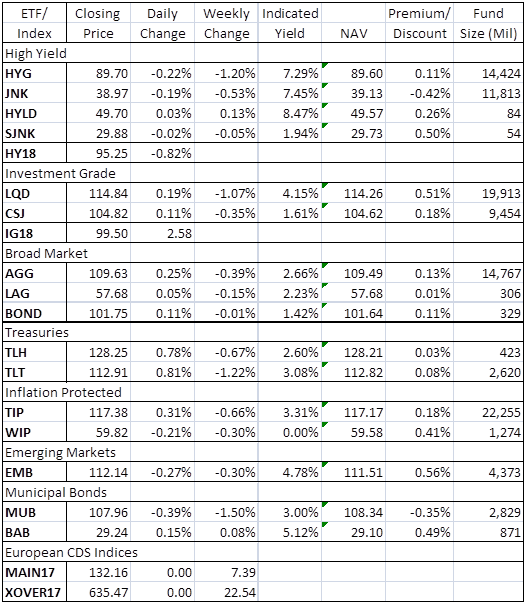The T Report: ETF Overload

On this semi-holiday, there is not much to say about the markets. NFP was a disappointment. Those of us who have been arguing that the jobs data in January and February was inflated by the great weather and that the seasonal adjustments may have overstated the job recovery are feeling vindicated today. Job growth is okay, but too tepid to fuel a big recovery in housing or spending, and weaker than what the stock market had priced in. I’m sure we will see some attempt to talk up the market on the basis that QE is back on the table, but I think that is very premature. Too many Fed officials are spending too much time downplaying the possibility of more QE for it to be put back in play so quickly.
Yesterday was the first time I saw that a lot of “bears” had finally cut a lot of their shorts. Some had even gotten long. On our “best ideas” we kept a SPX short overnight (in ES futures so it could be traded today). We advised closing that out, post number. Now we too are far less short than at the start of the week. It has been a good week, but it is a bit strange that we too have taken chips off the table, possibly prematurely. In spite of S&P futures trading at a high of 1,418 and now trading at 1,372, it is possible the market is actually more poorly positioned than it was at the start of the week. It is unclear that the “permabulls” have been swayed so they may remain positioned. What is clear is that the “permabulls” are pretty fully allocated to the market. With bears short, or even long for a trade, there may be less support out there on any renewed weakness next week. Now I’m hoping for some QE chatter and some ECB intervention in Spain to be able to reset shorts at better levels.
While there may be a shortage of new jobs, there is no shortage of new fixed income ETF’s. We are working on expanding the list that we look at and what information we think is important to watch on a daily basis. There were far more ETF’s than we realized. I was a bit surprised that none that focus on financials had attained any scale. The CMBS/RMBS offerings were too high quality (and small) to be of particular interest to us. I haven’t yet found some that would let you play bonds in Spain and Italy, but I’m pretty sure that is from a lack of effort on my part today, and not that they don’t exist. We have included a couple of actively managed ETF’s. BOND, since with Pimco’s marketing campaign it is hard to ignore it. HYLD was included because although it is small, it has significantly outperformed HYG and JNK.
I hate the idea of SJNK – as I don’t like the idea of only owning short dated junk bonds. It may push these prices higher in the short term, as institutional investors probably demanded a higher return than retail will, but ultimately this could easily develop into a very cheap short as institutional demand for these bonds is extremely limited in a downturn as institutions prefer longer duration, low price bonds, in times of stress. CSJ bothers me less, as it is higher quality, but it really owns lots of weird entities. EIB, IBRD, KFW, etc. There is almost no spread on short dated investment grade corporate bonds, so funds like this will stretch into the weakest and strangest credits.
I haven’t included closed end funds or mutual funds, but maybe need to. I like HYG and JNK as an asset class play, but with yields so low, there is clearly value in working with active managers that are good (doesn’t have to be an ETF). LQD seems like it needs to be refined. A spread based option would be useful, as would one that separates the true corporate side of the portfolio from the financials. Financials are close to 1/3 of the portfolio – which is reflective of their importance in the underlying index, but does mean that you have difficulty making a targeted investment in either corporate or financials – so again, traditional managers can provide this much better.

